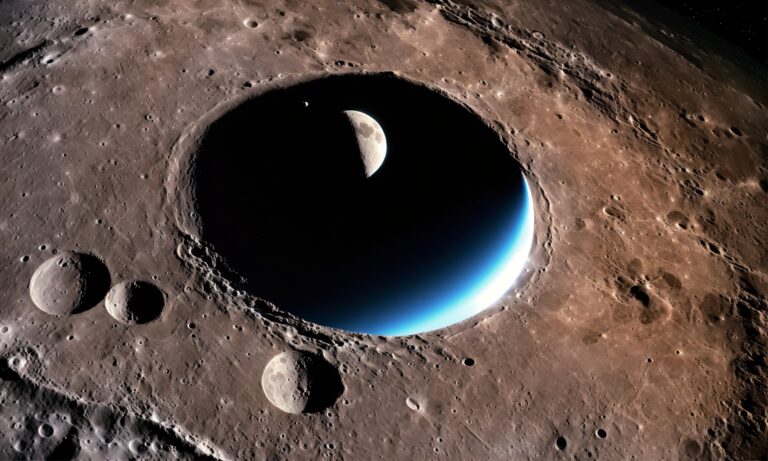Worldsfeed Tech Desk: Indian Space Research Organization (ISRO) has made a significant breakthrough, confirming the presence of water ice within the craters of the Moon. The study, conducted by the Space Applications Center (SAC)/ISRO, alongside researchers from IIT Kanpur, University of Southern California, Jet Propulsion Laboratory, and IIT (ISM) Dhanbad, provides insights into the distribution and depth of this ice, which could play a crucial role in future lunar missions and potential human colonization of the Moon.
The findings, published in the ISPRS Journal of Photogrammetry and Remote Sensing, reveal that the amount of ice several meters below the surface is 5 to 8 times greater than the ice found at the surface. This deeper layer of ice could be critical for long-term exploration and human habitation on the Moon, offering a valuable resource for water, fuel, and life support systems.
Implications for Future Moon Missions
The discovery of substantial ice deposits will guide future missions in selecting optimal landing sites and locations for collecting ice samples. It also opens up new possibilities for drilling and excavating ice to support a permanent human presence on the Moon. ISRO’s study indicates that this resource is more abundant at the Moon’s North Pole, where the ice content is double that of the South Pole.
The origins of the water ice are also intriguing. The study suggests that the ice in the craters could be a result of volcanic eruptions during the Imbrian period, approximately 3.85 billion years ago. This geological insight offers a deeper understanding of the Moon’s history and its potential to support life in the future.
ISRO’s Chandrayaan Mission: A Pioneering Effort
The Chandrayaan missions have played a pivotal role in confirming the presence of water ice on the Moon. The Chandrayaan 1 mission, launched in 2008, first suggested the existence of water ice in the Moon’s subsurface. This finding was later supported by the polarimetric radar data from Chandrayaan 2’s Dual Frequency Synthetic Aperture Radar instrument.
ISRO’s efforts have not been without challenges. The recent Chandrayaan-3 spacecraft narrowly avoided a potential collision with space debris or a satellite by delaying its launch by 4 seconds, illustrating the complexity and precision required in space exploration.
Voyager 1: A Milestone in Space Exploration
In a related development, NASA’s Voyager 1, launched in 1977, has sent a signal from a record-breaking distance of 24 billion kilometers. This signal, the first in five months, marks a remarkable achievement in space communication and showcases the enduring legacy of human-made spacecraft exploring the farthest reaches of the cosmos.
ISRO’s confirmation of water ice in Moon craters and the continued success of missions like Voyager 1 exemplify the incredible advancements in space exploration. As ISRO and other space agencies continue to explore the Moon and beyond, the potential for future human habitation and deeper understanding of our solar system grows ever more exciting.


0 Comments